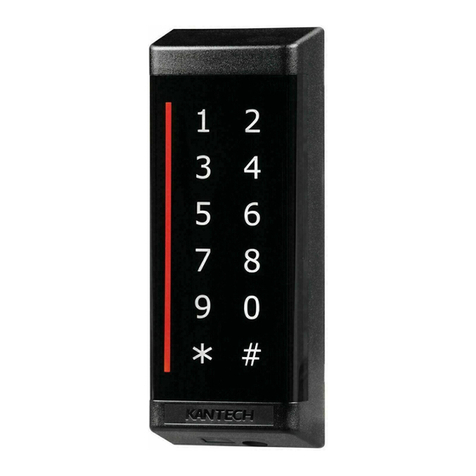
DN5084-0804 iii
Safety Instructions
The P600 ioProx Long Range Reader is designed to be INSTALLED and MAINTAINED by SERVICE
PERSONNEL ONLY. Service personnel must have appropriate technical training and experience
necessary to be aware of the hazards to which they are exposed and of measures to minimize the danger
to themselves or other persons.
The Equipment is a FIXED Class III equipment designed for CONTINUOUS OPERATION. It shall be
installed in NON HAZARDOUS LOCATIONS ONLY, OVERVOLTAGE CATEGORY II, and it shall be
powered via a LIMITED POWER SOURCE as it is defined within the Clause 2.5 EN60950:2000. The
equipment shall be interconnected with other equipment by using cables insulated with PVC, TFE, PTFE,
FEP, neoprene or polymide and which are RATED for the intended environment.
The ENCLOSURE of the P600 ioProx Long Range Reader must be secured to the building structure
before operation.
The connection to the mains supply must be made as per the local authorities’ rules and regulations. An
appropriate disconnect device shall be provided as part of the building Installation; Where it is not possible
to rely on the identification of the NEUTRAL in the AC MAINS SUPPLY, the disconnecting device shall
disconnect both poles simultaneously (LINE and NEUTRAL).
Regarding the power supply:
• It shall be PERMANENTLY CONNECTED,
• In European Union countries, it shall meet the applicable requirements of the Low Voltage Directive
and protected, as per the EN60950 Standard,
• In all other countries, it shall be of an approved type acceptable to the local authorities.
If during the installation, OPENINGS are made in the PLASTIC ENCLOSURE, it is the installer’s
responsibility to ensure that the same degree of protection for the ENCLOSURE as it has before will be
provided, by the use of bushings, fittings, adequate sealant, etc. (These must be appropriate for the
expected environmental conditions).
Internal wiring shall be routed in a manner that prevents:
• Excessive strain on wires and on terminal connections,
• Loosening of terminal connections,
• Damage of conductor insulation.
It is the end-user’s and/or installer’s responsibility to ensure that used batteries are disposed according to
the waste recovery and recycling regulations applicable to the intended market. The intended to be used
batteries shall be in full conformance with 91/157/EEC Directive.
ATTENTION: THERE IS HIGH VOLTAGE (UP TO 900 VAC) BETWEEN SAFETY EXTRA LOW POWER
CIRCUIT AND THE ANTENNA: RISK OF ELECTRIC SHOCK, DO NOT TOUCH BOTH CIRCUITS AT
THE SAME TIME. DISCONNECT THE POWER WHEN SERVICING THE READER CIRCUIT.
CE Compliance Notice for EN 50130-4:
Please note that 18AWG shielded cable must be used to comply with EN 50130-4.
FCC compliance notice:
Changes or modifications not expressly approved by the party responsible for compliance could void the
user's authority to operate the equipment.






























